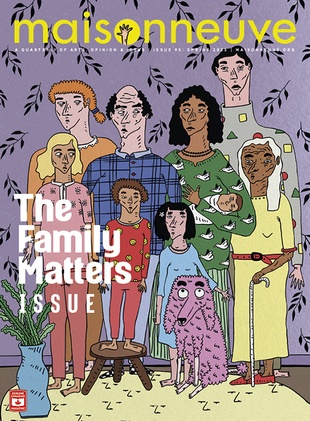How to Bike Around Montreal in 1897
The modern bicycle was invented in the 1860s, but it wasn’t until the “safety bicycle” was introduced in the 1890s that cycling really caught on. The new bikes featured chain-drive transmission, pneumatic tires, a metal frame and two small wheels of equal size; they were exponentially more comfortable than the bulky, bone-shaking dandy horses and velocipedes of earlier eras. Their innovation led to cycling’s first episode of mainstream popularity.
More and more city streets were being paved, and with the Model T still a decade away from production, the only things that newly-minted cyclists had to worry about were pedestrians and horse shit. The map above, pulled from the collection of the Bibliothèque et archives nationales du Québec by Spacing Montreal’s Alanah Heffez, shows a collection of bike-friendly streets and roads in turn-of-the-century Montreal. The emphasis is clearly on recreational cycling through the countryside — most of the island was still undeveloped back then — but it suggests the extent to which cycling was seen as an attractive way to get around.
Things changed in the twentieth century, of course. Like most cities, Montreal became more and more oriented around the automobile. Cycling never quite died out the way it did in other cities, and it enjoyed a resurgence in popularity after the 1970s, but it was still a distinctly eccentric way to get around. Even when new cycling infrastructure was built under the Jean Doré administration in the late 1980s and early 1990s, it wasn’t clear whether it was built with the intent to facilitate cycling as recreation or transportation. Plenty of people got around Montreal by bike, but it wasn’t until very recently, when the number of cyclists and cycling infrastructure reached a kind of critical mass, that cycling became a widely accepted way of moving around the city.
Last month, I returned to Montreal for a couple of weeks and I made great use of Bixi, the city’s expansive bike-sharing system. Bixi is now in its third year and the honeymoon it first enjoyed with the public is clearly over; in recent months, the local newspapers have been filled with stories about discontent over broken bikes, a budget shortfall and new advertising panels on each bicycle. Yet the system remains vastly popular: its ridership has grown by 40 percent this year alone, with two million trips taken halfway through the cycling season.
What struck me as I biked around the city was how much Bixi has changed the culture of transportation in Montreal. Years ago, when I first started biking there, drivers were aggressive and unpredictable; this time, I was astonished to find drivers stopping to let me and my girlfriend pass as we biked across major thoroughfares. (Normally, Montreal drivers don’t stop to let pedestrians cross, let alone cyclists.) Everywhere I went, drivers and pedestrians were aware and respectful of our presence. In two weeks of biking, I didn’t have a single close call or episode that made me feel unsafe.
The reason for this might be simple: there’s power in numbers. Bixi has not only put thousands of new cyclists on the road, it has increased their visibility, both through its ubiquitous physical presence — the stations are found on every other corner and the bikes themselves are big and hard to miss — and through the preponderance of media coverage over the past three years. New cycling infrastructure, including segregated bike paths like those on de Maisonneuve or Côte Sainte-Catherine and bicycle parking that takes the place of on-street car parking spots, has made it safer than ever to bike. There has been some controversy about the aggressive new push towards cycling, but nothing on the scale of New York’s “Cycling War,” and by and large Montreal seems to have undergone a broad social shift towards mass acceptance of cycling.
I recently finished reading David Byrne’s new book, Bicycle Diaries, which chronicles the former Talking Heads frontman’s experience of cycling through cities like New York, Istanbul, Buenos Aires and London. The book isn’t strictly about cycling — it’s actually a wide-ranging, sometimes rambling compendium of Byrne’s thoughts on urbanism, society, culture and just about anything that crosses his mind — but it includes some good nuggets of wisdom about why cycling is so great. In the case of bike-sharing specifically, he writes:
In the past one’s activities might have been considered and limited by Métro schedules and routes, taxi availability, and other factors like parking and traffic. The bikes liberate one from all those concerns, as well as create a mood of conviviality and social comfort.
I’m not sure if cycling ever became popular enough in 1897 for it to have had that kind of effect on the city. But in 2011, it certainly has.
(From UrbanPhoto. Follow DeWolf on Twitter.)
Subscribe to Maisonneuve today.
Related on maisonneuve.org:
—Why Can't Drivers and Cyclists Just Get Along?
—Montreal's Navarino Cafe: A Love Letter
—Photos: Montreal in Early Summer
Follow Maisonneuve on Twitter — Like Maisonneuve on Facebook






